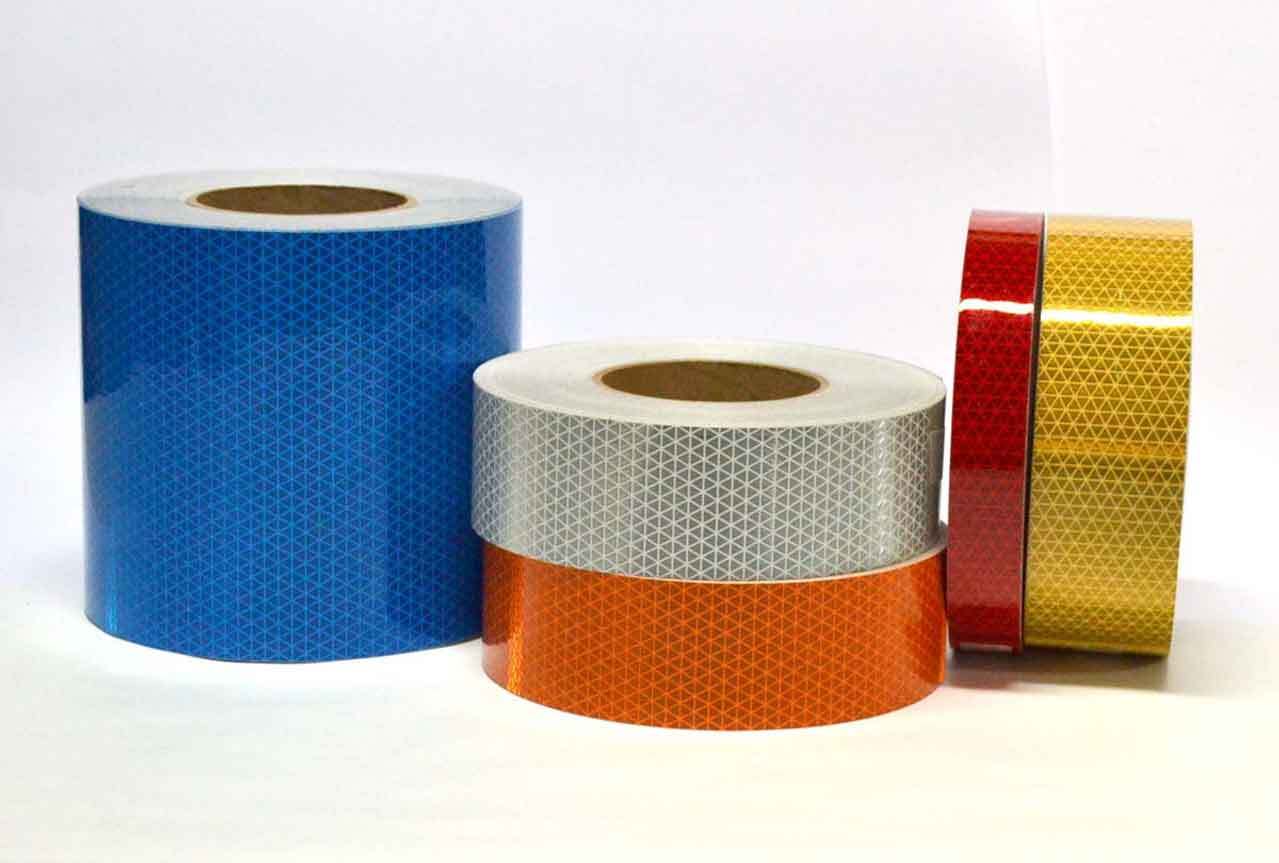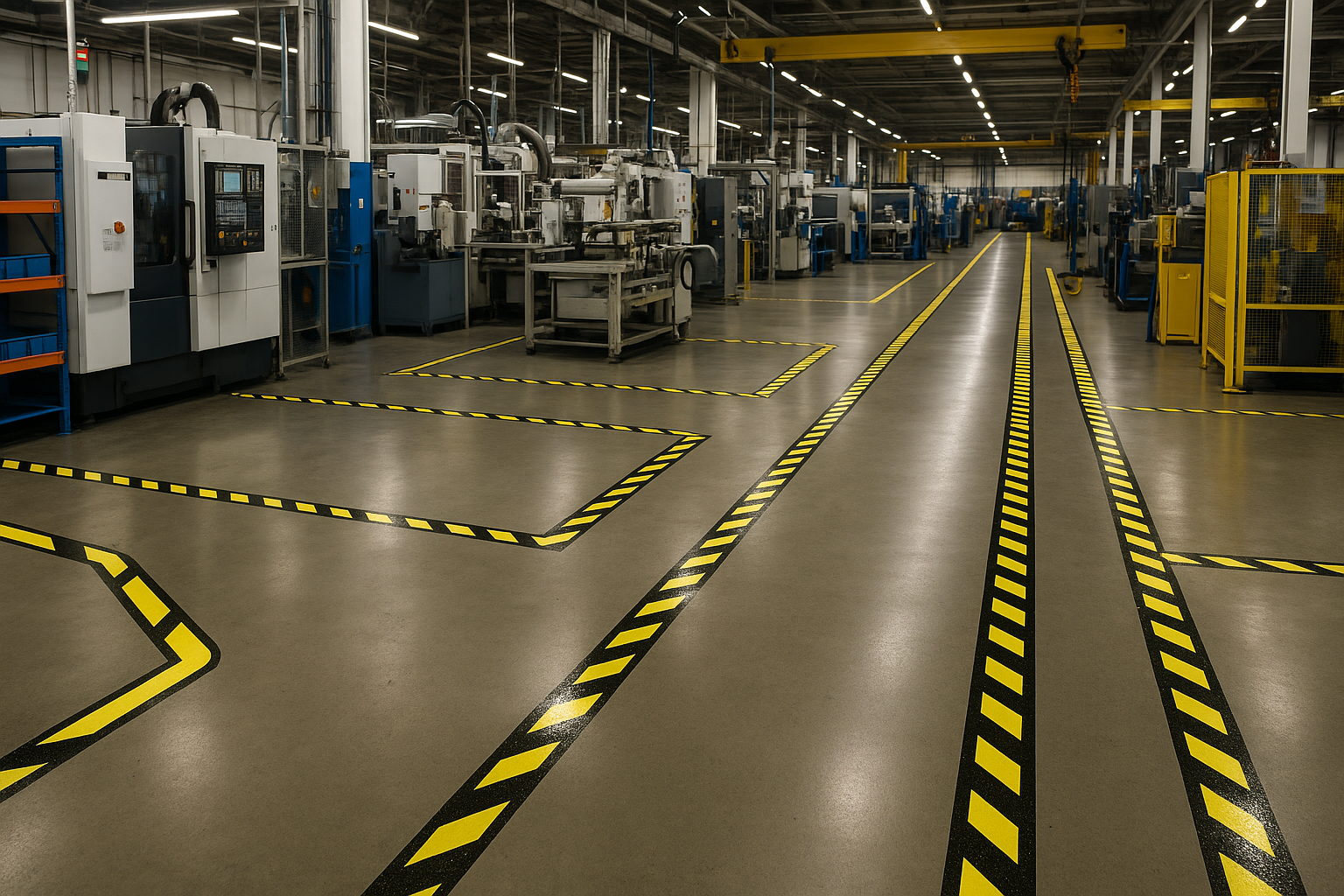The Role of Reflective & Safety Tape in Manufacturing Compliance
Few industries are as complex as manufacturing. While operators often prioritize efficiency and productivity, it's never at the expense of safety compliance, which is prohibited by the strict regulations imposed by bodies like the Occupational Safety and Health Administration.
It makes sense why safety is constantly top-of-mind in this sector. The loads are heavy, surfaces are often slippery, and machines are constantly in use.
Given how seriously manufacturers take workplace safety, you'd think they'd consider every possible tool for peak compliance. However, one safety tool still doesn't get the appreciation it deserves: the humble safety tape.
Known as reflective tape or safety and reflective tape in some quarters, safety tape works by bouncing light back to its source. That way, the surface it's attached to becomes highly visible, significantly reducing the chances of accidents occurring.
In this blog, Tape Jungle experts explain why reflective and safety tape is an important, no-brainer addition to a manufacturer's toolkit.
Understanding Manufacturing Compliance Standards
To some extent, the creation of safety tape was inspired by the realization that manufacturing compliance standards will only get stricter.
Below are two key organizations that set these standards:
- Occupational Safety and Health Administration (OSHA): This government agency requires workplaces to strive for the highest possible safety and health standards. Manufacturing is no exception. To be fully OSHA-compliant, manufacturers must establish clear safety measures, including - but not limited to - the proper marking of hazardous areas, pathways, and equipment.
- American National Standards Institute (ANSI): Unlike OSHA, ANSI standards are a product of representatives from various industries coming together. Therefore, they are best practices, not necessarily hard and fast rules. In particular, ANSI outlines recommendations for color coding, safety signage, and floor marking.
Not complying with these standards could have devastating implications for a manufacturer. Accidents could occur, the organization might incur hefty OSHA-engineered fines, or worse, legal issues might ensue.
This is where Tape Jungle's reflective and safety tape truly shines. It's brightly colored and reflective enough to fit any corner and use case within manufacturing. Generally, it's a simple, cost-effective way to meet both OSHA and ANSI standards.
Types of Reflective Tape for Manufacturing
A single type of safety tape cannot contribute to full regulatory compliance. However, a combination of different reflective tapes at Tape Jungle can be used.
Here are the most common safety tapes used in manufacturing:
Reflective tape
The name says it all. Reflective tape "reflects" light back to where it came from, making objects more visible than they initially were. It's the go-to tape for enhancing visibility in low-light areas or nighttime conditions.
Reflective tape is equally helpful for marking equipment. Marking specific types of equipment makes them easier to locate on an otherwise concentrated or high-traffic floor.
Because of reflective tape's inherent properties, it's the perfect tool for meeting ANSI's visibility and identification guidelines. At the heart of ANSI is an emphasis on ensuring workers can quickly identify hazards, even in adverse lighting conditions.
Floor marking tape
The floor marking tape at Tape Jungle does a lot more than mark pathways for forklifts. It also demarcates pathways and traffic flow patterns, helping to control and streamline people's movement, especially on floors frequented by large crowds.
Since floor marking tape boasts a thickness of up to 35 mm, it can withstand consistent foot and machine traffic for several years, not months, without tearing.
Social distancing tape
You probably know this tape from the pandemic. But recently, it's also found its way into the manufacturing space.
The goal is to ensure floor workers maintain safe, proper distance in communal areas such as break rooms, cafeterias, and entrances. Social distance has steadily become "safe distance."
Gaffer tape
Gaffer tape is the undoubted king of entertainment and event production. Lately, though, it's also started carving out a place in manufacturing. Thanks to its strong adhesive and easy-to-remove properties, it's quickly emerging as a solution for temporary markings and cable management.
On days when you want to mark temporary zones or erect safety barriers that need periodic removal or adjustment, gaffer tape is your best friend.
Anti-slip tape
Slip and fall accidents contributed to 450,540 work injuries in 2022. A good chunk of these, you'd imagine, happened on manufacturing floors.
Tape Jungle's anti-slip tape provides excellent traction and a firm grip in high-traffic areas. Pooled water and oil spills, leaky machinery, and weather hazards can make a floor endlessly slippery.
Production floors, loading docks, and areas near machinery are among the best surfaces to apply anti-slip tape to.
Practical Applications in Manufacturing Settings

In a manufacturing setting, safety and reflective tape provide a practical solution for many tape-dependent applications.
Marking hazardous zones
Manufacturing spaces never seem to run out of machinery or equipment that could be hazardous to employees.
Use reflective and floor marking tape to correctly identify such zones so employees don't unknowingly wander near dangerous equipment. Clear, highly visible tape could benefit areas with rotating machinery or high-voltage, in particular.
Traffic flow guidance
Manufacturing floors are often hives of activity, with people and equipment continuously moving in different directions. Without proper guidance, this unceasing traffic can cause collisions and operation snags.
Tape Jungle's floor marking tape is ideal for directing pedestrians and vehicles, and there are even different patterns and color options. Impact and rapture resistant to the core, this tape helps ensure workers follow safe paths without ever getting in machines' way.
Emergency exits and pathways
Properly marked exits and pathways could mean the difference between a stampede and a safe evacuation during an emergency. Reflective tape fits into this use case very well. It improves visibility for employees seeking the nearest exit, and even in low-light or smoke-filled conditions, reflective tape won't stand out any less.
Equipment handling
No one would knowingly touch a hot surface or high-voltage equipment. Still, it happens, often out of tediousness or forgetfulness. Humans are prone to error, after all. Labeling machines or equipment with reflective tape helps highlight specific risks associated with that equipment.
Tape in bright, visible colors is quickly becoming standard. Even for night workers, the innate reflective characteristics of safety tape are a life-saver when regular lighting alone isn't enough.
Safety signage
Are you currently using safety signs alone to communicate safety hazards or measures? How quickly can your employees identify them? Nowadays, the trend is to supplement conventional signage with reflective and safety tape.
Use them together, not in place of each other. This makes hazard identification easier and quicker than ever.
Below are the most popular color codes in the manufacturing realm today:
- Yellow: Perfect for aisles, walkways, traffic lanes, and general caution areas.
- Red: This is the surest sign of danger on the floor. Therefore, its tape equivalent is a natural fit for fire equipment and potentially hazardous materials.
- Blue: The industry-approved code for general hazard communication and caution areas designation.
- Black/yellow: This combo is unbeatable for physical hazards or areas needing extra caution.
Best Practices for Choosing and Applying Safety Tape
No one wants a safety tape that easily loses adhesion or looks and feels like an obvious misfit in a sea of people and equipment, so consult these tips before kick-starting the selection and application process:
Material selection
A Tape Jungle safety tape is only as good as the surface or environment it's used in. So choose soberly. Consider factors like the type of surface and the likelihood of high traffic before making a selection.
Adhesion and durability
Above all else, make sure your tape of choice has strong adhesion and is designed for long-term durability.
Color coding
According to ANSI's guidelines, different color-coded tapes should communicate different hazard types. Red, for example, is for danger, while yellow is the industry language for soft caution.
Strictly adhering to laid-down color coding stipulations shows you care about industry standards and workers' safety.
Application techniques
We can't emphasize this enough: Thoroughly prepare surfaces before applying safety tape.
Most manufacturing surfaces need nothing more than a good old scrub with water and isopropyl alcohol (IPA). The cleaner the surface, the longer the adhesive will last.
Inspection and maintenance
Over time, tapes may wear out, peel, or fade, which could compromise their effectiveness. Regular inspections can help identify such instances before they become potential hazards.
Cost-Effectiveness and ROI of Using Safety Tape
Safety tape might seem like an expense you'd rather avoid. In the long run, however, it's most certainly an investment.
Think of it this way. Properly applied Tape Jungle safety tape dramatically reduces the likelihood of accidents and minimizes compliance violations. Problems with either can potentially eat into your organization's finances, especially if you get sued.
Yet another angle to consider is investing in long-lasting tape options that minimize replacement costs. Reflective tape is a proactive safety investment that could save you the financial pain of potential fines. As you know, legal fines and fees due to preventable slips and incidents can be significant.
Final Words
There's no proper compliance without safety tape. Using it, manufacturers can capably communicate hazards, properly mark paths for regulating traffic, and protect their most important asset: workers. Think of it as the affordable, cost-effective solution that makes manufacturing safety compliance a noble endeavor, not a chore.
That said, only high-quality safety tapes can provide the reliability and durability manufacturers seek. At Tape Jungle, we have them all. If you can envision it, we likely carry it. Visit Tape Jungle for reliable reflective and safety tape solutions.


 Default Currency
Default Currency
